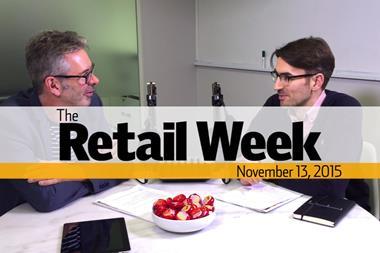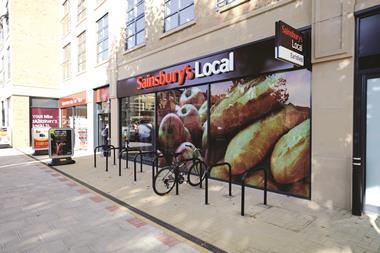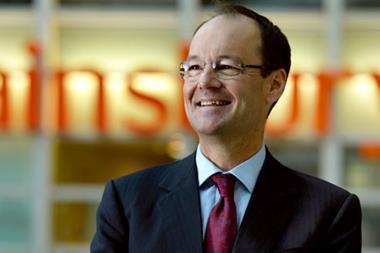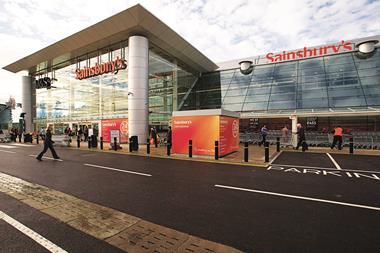Grocer Sainsbury’s underlying pre-tax profit slumped 17.9% to £308m for the half year. This is what the analysts said.
“Sainsbury’s has beaten our expectations, not only financially but in terms of capability and resilience. The business is increasingly crafting its own identity again, somewhat differentiated as a mass-market player by its values, choice of offer and the specification of its wares. While not immune to the growing presence of the discounters, to date it has proved to be more capable in withstanding their advances than its value orientated peers. For this we give Messrs, Coupe and Rogers a great deal of credit.
“While all this is so, we should not overlook that Sainsbury’s profits are still falling, albeit at a slower rate than we first anticipated. Visibility towards earnings is also moderate, with the sector still fragile. While the mood music from Tesco remains rational and we sense that the market leader is progressing at relatively pedestrian pace, Sainsbury’s could yet be negatively impacted should a Tesco recovery of note come through – albeit we do reiterate the prior point of Sainsbury’s greater resilience than we had previously expected.” – Clive Black, Shore Capital
–
“As expected, this morning Sainsbury’s reported a sharp drop in underlying pre-tax profits as price reduction investments begin to bite. With food price deflation now entrenched, and discounters growing market share, mainstream operators such as Sainsbury’s must face up to the harsh realities – invest in lower prices or lose out to cut-price rivals.
“Sainsbury’s has been very transparent regarding adapting its formats to the changing retail paradigm – trialling a mini c-store concept and six future-format outlets. The former provides a potential, if somewhat uncertain, growth opportunity. The latter may drive footfall into larger stores through layout changes, enhanced checkout options and by adding third-party concessions.
“Add to this the fact that Sainsbury’s estate is structurally advantaged with fewer very large stores, and the outlook for sales performance going forward may not be so bleak after all. Profits, however, are another matter entirely.” – David Gray, Planet Retail
–
“The tone of today’s unusually detailed interim results statement from Sainsbury’s is so relentlessly upbeat that you have sometimes have to double-check that underlying profits did actually slump by 18% and that the interim dividend has been slashed by 20%.
“However, to be fair, underlying pre-tax profit of £308m isn’t quite as bad as the City had feared, despite a 1.6% like-for-like sales decline and margin pressure – and Sainsbury’s has confirmed that operating cost savings of £115m in its first half were ahead of plan and that good non-food sales were part of the relatively good top-line outcome.” – Nick Bubb, independent analyst
–
“Sainsbury’s has had a fair ride through the first half of its financial year but the biggest grocery quarter has only just started and the stakes are high. Focusing on the shopping mission is a good position to take for larger format stores, but some of the changes to adjacencies are, well, weird.
“Sainsbury’s has been bold in some ways, the Netto tie-up and the format trials, compared with the rather staid approach to marketing. Here they need to be bolder and differentiate themselves while driving that all important footfall.
“Christmas will be a telling period to assess performance of Netto and if it is good news, it will make a great story for January.
“Sainsbury’s has firm foundations on which to build through its third quarter but when so much of Christmas performance depends on advertising, store operations and availability, the results are anyone’s guess.” – Phil Dorrell, Retail Remedy
–
“Sainsbury’s is losing sales at a slower rate than its big competitors, and its market share is down only marginally to 16.5%. Yet there are several reasons to be cheerful. Sales and profits are down, but volumes are up – showing that Sainsbury’s is adapting to the new normal better than most.
“The brand’s convenience store format is strong, and can quickly be scaled up. The company’s turnaround plan is starting to bear fruit, and the money saved can be ploughed back into keeping prices competitive.
“But major strategic issues remain. The challenge of paying the living wage to all its staff while slashing prices to compete with the discounters will continue to stretch Sainsbury’s. And in an environment of food deflation and competitor price cuts, no one should expect a quick return to increased sales.” – John Ibbotson, Retail Vision


























1 Reader's comment